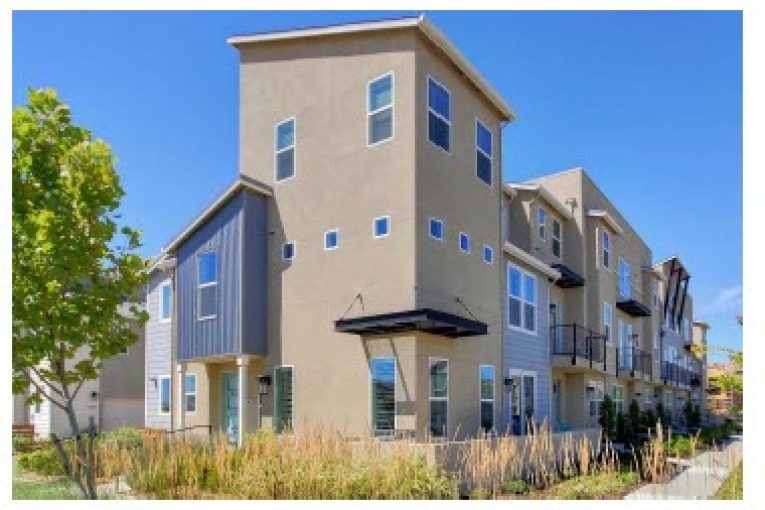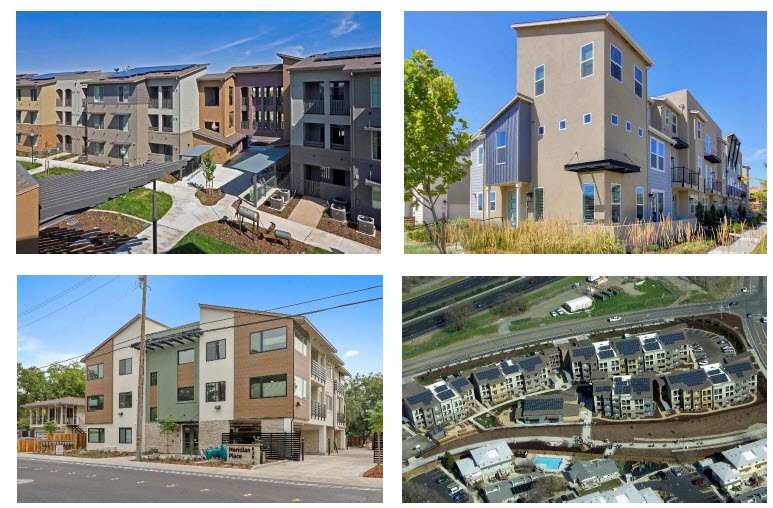

Davis, CA – In a release on Friday put out by Sustainable Growth Yolo, they lauded the fact that the Davis Housing Element Committee voted in favor of 10 pro-housing comments in the draft housing element.
Sustainable Growth Yolo is a volunteer-run housing advocacy organization that pushes for additional housing.
In their release, they called the votes by the DHEC “a big first step in making the Davis Housing Element a pro-housing document.”
Thursday’s meeting was the final meeting of the DHEC and the comments made will now be included in the document as part of the public hearing process.
The next steps for the document will be a review and comment on by the Davis Planning Commission on May 26, and then the same at the City Council on June 15.
Sustainable Growth Yolo summarized the ten changes they sought as follows:
- Include the Davis Housing Trust Fund in the HE which calls to provide more funding for Affordable (subsidized) Housing, 9-1 Yes *No vote wanted more details.
- City adopts Housing Trust Fund and study to add more details than the previous draft.
- Explore removing R-1, aka single-family home only zoning, 10-0 yes.
- Explore eliminating parking minimums in new construction of residential, 9-1.
- Identify the real costs of renting an ADU, making sure they are actually for low-income renters which are what the current draft says.
- Remove the Davis 1% Growth Cap, 10-0 Yes.
- Explore re-zoning strip malls to allow housing built on it, 10-0 Yes.
- Explore By-Right aka Ministerial Approval for new housing if it meets the Zoning Code and Affordable Housing Ordinance as is, 7-2-1 Yes
- Calls on Council to hold a city wide vote to pre-approve development on two properties, Under the Mace Curve & Wildhorse Ranch. Will need a vote of the city under Measure J/R/D to do so.
- Makes a comment that RHNA numbers and goals are a floor, not an aspirational goal. Committee voted 9-1 saying we want to build more than RHNA assignment!
Support our work – to become a sustaining at $5 – $10- $25 per month hit the link:

Approval by a committee is not the same thing as final approval by the city. But, I’d strongly suggest that anyone concerned about any of these proposals let their thoughts be known.
Which of these are you concerned with and why?
At first glance:
I’d ask more about for more details regarding the Housing Trust Fund, including where the money would come from.
I’d suggest not rezoning all single-family zoning, unless neighbors don’t mind dwellings next-door to them torn down and replaced with apartments.
I’d suggest not eliminating parking minimums across-the-board, as there’s no evidence that this eliminates cars, and almost certainly results in more cars parked on the street. (I’d reiterate the reasons that parking minimums were required in the first place.) This is actually a way for developers to “shift” costs and impacts to existing residents and businesses, rather than offsetting their own impacts.
I’d suggest that if anyone is going to estimate the rental cost of an ADU (or any other development proposal), it should be the organizations pushing for development such as “Sustainable Growth Yolo”.
I’d suggest not removing the 1% growth cap, and again review the reasons that it was enacted. I’d also recommend redefining it, so that 5-bedroom units don’t “count” the same as 1-bedroom units in regard to the unit-cap.
I absolutely would not recommend rezoning what’s described as “strip malls” to accommodate residences, as the city already claims a lack of commercial space. Instead, I would explore other potential commercially-oriented zoning, if retail is no longer working. But again, some of the “strip malls” appear to house businesses (including a supermarket, among other businesses), already. And as restaurants recover, they will also re-open in those locations. (One of them closed in the 8th Street Mall, apparently as a result of the lockdown.)
I’d suggest that the “By-Right Ministerial Approval Process” should be examined very closely as to the possible or probable impacts of that. (Robb Davis seemed to be pushing pretty hard, for that.)
I’d suggest that the city stay-out of the business of advocating for Measure D approvals, especially in the lack of any proposals. We’ve already seen them (including Gloria and Dan) “get involved”, in regard to the failed DISC proposal – which would have exacerbated any claimed “housing shortage” in the first place, if it was actually viable.
As far as the two locations mentioned in these recommendations, the Wildhorse site already lost by a huge margin, once. And the other site (inside the Mace Curve) might be more appropriate for commercial uses.
As far as the last proposal on the list, I don’t believe that the city should be in the business of advocating an increase over RHNA numbers.
This is not correct. While I believe “by right” is an important tool for streamlining approval processes, my question during the forum was about its efficacy absent an update to the General Plan. The response made it clear that both are necessary. I am pushing for an updated GP to avoid a multitude of discretionary actions that add costs to projects and increase exactions. I don’t believe ongoing GP-amendment-approvals represent good planning, even if the results (denser housing) are needed.
After being notified about this article and reading it, I can easily say that I agree with Ron’s comments. One minor difference is that that I have no problem with exploring ways for affordable housing to be funded. However, the majority of the other recommendations I see fraught negative impacts on the City.
Just to mention a few, the idea of reducing parking significantly when the City does not have a public transit system that would be needed to reduce the need for having a car and the parking needed makes no sense. The downtown does not have enough parking now and putting more housing without parking there would negatively impact the downtown stores. It is a practical reality that people from outside of Davis’ downtown will not shop or eat downtown if they have nowhere to park their car. In turn, that would negatively impact the revenue generation of the downtown.
Also, the concept of eliminating single-family housing zoning to allow 2-4 (or more) units built on a single -family lot lot next to a single-family residential unit, bought because it was in a in a single-family zoned neighborhood had the reasonable expectation for it to remain a single-family neighborhood. This proposal would particularly impact lower income neighborhoods, such as in East Davis since some of the lots may be cheaper if the house on it is needing major renovation or repairs. However, the seller makes a bundle of money exiting the neighborhood, then placing the impacts upon the rest of the remaining neighborhood.
Another very concerning issue is the concept proposed of the City having an “initiative” to exempt the Wildhorse Farm and the property inside of the Mace Curve Signature. While the pitch for this was for “streamlining” more development, the reality is that this is clearly an “end run” around Measure J/R/D. So, Davis citizens need to understand that if they support an initiative like this they would have no say on what got built on these propertied/.It would basically be a “blank check” for the developers of those properties to build anything without the public having any meaningful input. For instance, it could mean more mega-dorms or more McMansions on these parcels, neither of which help to provide housing for our average workforce or families. Further, seven story buildings may be approved next to one story building and other types of incompatibly development because it would be completely open-ended development that could allow crappy projects. The whole point of Measure J (now Measure D) is for the public to have some meaningful input and the leverage to get well-planned projects when either ag land or open space is being developed.
The other issue about adding more units then the RHNA assignment, of 2,075 units is another disastrous proposal since the City does not even have enough land for traditional housing including smaller housing units on a small lot, for 2,075 units. Plus, we have no idea if HUD will allow any credit for the mega-dorms since they have already complained that they are not traditional housing, but “group housing”. So, as things stand, things and we really don’t even know if we can accommodate the 2,075 units if the mega-dorms are not allowed for credit.
Also, I find it interesting that the Vanguard article did not mention the issue of a very reasonable proposal made by A Planning Commissioner followed up by a Social Services Commissioner, which sadly failed due to a split vote. The motion was to simply to request that UCD to provide more on-campus housing to relieve some of the housing pressure for Davis workers and families. It was clear that given the massive input by Davis citizen for the past 7 years on this to the City Council that this proposal should clearly have passed on this Housing Element Committee. It made clear that in the future, the City needs to have more than a 10 people on a committee determining the future of the city, with a more fair and better balanced representation of the community. As a result, the recommendations did not represent a broad cross section of the community, particularly since a number of the committee members had not had the advantage and experience of participating on any City committees in the past on housing land use issues to be more familiar with the issues.
.
Actually Davis has a pretty good transit system for most of the city. It is only West Davis that must transfer at the university to get downtown.
.
Sadly, because of Measure J and its successors, this expectation has been superseded by the expectation that Davis should densify.
.
Lower income neighborhoods in Davis? Not for any property owners. Restrictive housing policies across the state, but particularly in Davis, have driven prices to the moon.
.
Actually the construction of new housing mitigates pricing of existing housing as demonstrated in a recent article I posted here a few days ago. Then the Mega-dorm/ McMansion bugaboo rises again.
.
The city has plenty of land that is in its planning area that could be annexed into the city. This is beat the Devil argument. Restrict annexation then claim there is nowhere to build.
.
We don’t know the details but we do know the Governor’s May budget revise included billions of dollars for housing construction. Both Davis and the County should act to capture some of that funding.
.
Still trying to keep the college kids from being able to vote in Davis.